Alberta
Petrified Buffalo Hearts, Indian Maiden Breasts, Stalagmites and 70 Million Year Old Worm Poop

I recently attended the Lieutenant Governor of Alberta Distinguished Artist Awards in Maskwacis, Alberta. I was fortunate to meet Dr. Russ Schnell. He is the Deputy Director of the National Oceanic and Atmospheric Administration, Global Monitoring Division, in the United States. He grew up in the Battle River region and shared a fascinating story about discovering 70 million year old “Rosselia Worm Fossils” in 1958 in the bed of Castor Creek at the confluence of the Battle River.
Dr. Schnell was kind enough to allow me to publish a story he had written some years ago. I shot the video of Dr. Schnell as he was telling the story of how the fossils were formed.
The following story is adapted from the book “Stories from Life: Beauty Everyday As It happens”, 2016, Jane Ross ed., ISBN:978-0-9695841-2-4, Friesens Books, Altona, Manitoba, 325 pages (for a copy contact: Jane Ross <[email protected]>).
____________________________________________________________________
Petrified Buffalo Hearts, Indian Maiden Breasts, Stalagmites and 70 Million Year Old Worm Poop
By Dr. Russ Schnell, B.Sc., Ph.D., Dr.Sci. (Hons).
It was a Saturday in August 1958. The summer day was hot up on the open prairie in east-central Alberta. The air was much cooler in the narrow valley, especially in the shadows. And most of the valley was in shadows from trees growing on the rims above the sandstone cliffs.
The rock was stored in my parent’s garage for 50 years until I brought it to Colorado, USA, where I now live.
About 1:00 PM, the noon wiener roast was over and we had waited the obligatory one hour after eating before going swimming. Everyone knew that you would get cramps and drown otherwise! No matter that the water was only 4 feet deep at the deepest, and then only behind the beaver dams. And that the water was to cold to do much other than dip a few times, dog paddle for 10 feet, then shout out that it was “cold enough to freeze the balls off a brass monkey”1 and splash to shore and stand around a smoky campfire of poplar branches. It was too early in the day for mosquitoes, and even if they had been out, the eye-burning smoke would have kept them away from our tender, lily white bodies. Only our faces, necks and arms were tanned from spending every possible hour outside playing, hiking, swimming and riding bikes over the 20 square mile area of grasslands and creek valleys we considered our “territory”.
On this day, walking in the water bare footed on the bedrock, we would occasionally feel smooth, rounded, tapered stones under the water. We recovered some of these “stones” which were very heavy for their size and that appeared to be composed of iron. At least they looked the colour of rusted iron!
No one seemed too concerned that the sparks from the fire could ignite the surrounding dry grass and possibly spread for miles. Hey, we were six 9-12 years old boys, friends since toddlers, invincible, girls yet to be discovered, having another boy’s day out along the creek, 2 miles from Castor town. We stood naked, dripping and shivering, occasionally stirring the fire back to life to keep warm while roasting (flaming) marshmallows on slender willow switches we had cut and peeled earlier on which to roast the wieners.
1. “Cold enough to freeze the balls off a brass monkey” is possibly an old naval saying. A monkey was a brass plate with holes in which iron cannon balls were stacked. When it got very cold the brass would contract more than the iron cannon balls and therefore the balls would pop out and roll off the brass monkey! Of course we did not know that then. We had heard older boys make the “brass monkey” statement when they were around girls who would giggle, so we thought it was “big” to talk like that.
Before roasting the wieners, we had played “stretch”, a game where two boys stand facing each other then throw a hunting knife to stick no more than 2 inches to the side of an opponent’s bare foot. If the knife stuck in the ground and was not more than the allowed 2 inches away, the recipient of the thrown knife moved his foot to touch the blade and then took a turn throwing his hunting knife to stick near the foot of the first thrower. The game ended when one person’s legs could no longer stretch further apart, and that person was declared the loser. There were always losers, never winners! All boys carried hunting knives in hip scabbards that summer. It was the thing to do.
A more imaginative member of the group said they felt like fossil Indian maiden breasts.
Now, to a pivotal juncture in this story. One reason we played in this particular part of the valley was that the creek had cut through to bedrock making it easy to cross on a solid rock footing. In most other stretches of the creek, the bottom was soft mud into which you would sink up to your knees or deeper. On this day, walking in the water bare footed on the bedrock, we would occasionally feel smooth, rounded, tapered stones under the water. We recovered some of these “stones” which were very heavy for their size and that appeared to be composed of iron. At least they looked the colour of rusted iron! They were conical in shape and every one had a well formed, round indentation on the apex. On the broad end there was generally (but not always) a finger size hole near the centre. The stones varied in size from a large potato to a small watermelon.
Since we found the heart shaped rocks at the base of a cliff we “knew” was an Indian buffalo jump, some of us thought they were petrified buffalo hearts. Supporting this supposition was the fact that one of the group had found a black, perfectly shaped, sharp, fluted arrowhead near the creek on a sandy path worn by deer coming down the valley wall to cross the creek. A more imaginative member of the group said they felt like fossil Indian maiden breasts, not that any of us could confirm how a maiden’s breast felt. One such “petrified buffalo heart”, presented upside down, is shown below.

This “petrified buffalo heart” is 8 inches tall and weighs 8 pounds. It appears to be made of iron but is not magnetic. These fossils wash out of 70 million year old seashore sediments and settle onto bedrock in a small creek in east-central Alberta. Photo by Ed Ries, Castor, Alberta, 2009.
I took one of the “buffalo hearts” home in my backpack wondering, occasionally, over the hour hike back to town, why I was carrying a rock that was so heavy. The rock was stored in my parent’s garage for 50 years until I brought it to Colorado, USA, where I now live.
But, I digress from the timeline. On the hike back to town our ragtag group diverted to look at the body of a dead cow lying in a pasture. We had discovered it a few days earlier and were interested in looking at it again. On the discovery visit, the cow must have been dead for only a few days. It was bloated like an overextended balloon, there were flies buzzing around the mouth, eyes and anus, but otherwise the cow was as if sleeping on its side like a horse. On this second visit, the carcass was less bloated, but to our great surprise had been completely hollowed out from the rear.
There were no intestines, no lungs, no heart, no stomach, no blood. The interior cavity was dry as dust, the hide was intact and the “roasts” were still on the thighs. We surmised that coyotes had devoured the soft insides by chewing from the butt end into the body cavity.
Within a few minutes, he printed out a copy of a scientific paper on ancient marine worms that made burrows in the seafloor and left imprints of their existence.
Before leaving the carcass we convinced, cajoled or otherwise enticed the youngest boy, who wanted to be part of the “big boys” group, to play “coyote” and crawl into the interior of the cow. He did so to our great amusement as we beat on the hide covered ribs stretched taut like a large reddish drum. When we returned to the carcass a week or so later, it was picked apart and remnants were being pecked at by magpies. What meat remained was a seething mass of white maggots.
Fast forward 50 years to 2008. By this time I knew that the conical rock was not a petrified buffalo heart or a maiden’s breast. I was a slow learner! I was now convinced though that the rock was a stalagmite formed by iron rich water that had dripped onto a cave floor over thousands of years. I looked on the Internet for similar stalagmites, but did not find any. Still, sure of my analysis, I wrote a letter to the director of the Royal Tyrrell Museum, Drumheller, Alberta enclosing photos, and described where these “stalagmites” were found and asking how old they were. I wrote the letter on heavy, expensive looking stationary with an official U.S. government letterhead festooned with gold embossed logos, and signed with a number of titles. I figured that might get his attention and a response.
A few weeks later I received an email thanking me for the letter and photos, and suggesting that the “stalagmite” was possibly a random iron accretion. Although not a paleontologist or geologist, I still believed that this rock was made by a deliberate, not random process. After further correspondence, Dr. David Eberth, Senior Research Scientist, Royal Tyrrell Museum, agreed to meet in Castor, Alberta in late June, 2009, and to come to the valley to look at what I still believed were stalagmites. I flew up from Colorado and David, myself, a sister and 5 friends from Castor proceeded out to the valley now owned by another friend from toddler days. He took us to an area of the creek where there were many of the “stalagmites” and we each collected a few specimens. David asked to see an exposed cliff so he could possibly find some of these iron rocks embedded in their natural habitat. Gary Dunkle, the land owner, duly took us to such an embankment and David found a few of the conical rocks imbedded in a loose, grey, alkaline soil in an exposed cliff face.
Then he told us that a world authority on such creatures was Professor Murray Gingras ’95 B.Sc., ’99 Ph.D., Department of Earth and Atmospheric Science, University of Alberta.
To my great surprise, the “stalagmites” were oriented conical point down in the cliff face. This is not how stalagmites form! David now lost some of his prior cool composure, as he convinced me that my earlier conjectures were incorrect, that we were looking at a 70 million year old seashore deposit, and these iron accretions had probably once been made by something related to the seashore.
In a humorous throwback to events 50 years earlier, one of the fossils that David had excavated became dislodged and rolled down the steep cliff splashing into the creek behind a beaver dam. We convinced Eric Neilson ’88, B.Sc. Agriculture and ’09, B.Ed. and now a local school teacher, to wade into the water and retrieve the fossil. The water was over four feet deep and Eric had to fully submerge to finally locate and recover the fossil that was embedded in silt. There was no fire to get warm and dry beside this time!
We returned to the insurance and real-estate offices of Dale Emmett, one of the members on this current expedition, where David used a computer to begin looking up something called “Rosselia” on the Internet. Within a few minutes, he printed out a copy of a scientific paper on ancient marine worms that made burrows in the seafloor and left imprints of their existence. Then he told us that a world authority on such creatures was Professor Murray Gingras ’95 B.Sc., ’99 Ph.D., Department of Earth and Atmospheric Science, University of Alberta. Small world!
We departed the office in triumph and sojourned to a nearby bar where Ed Ries, a local rancher and another member of the days’ expedition, bought us a round of beer to toast our success. While at the bar, Brenda Scott ’73, B.Ed. (sister, also on the excursion) brought out some perfectly preserved fossil snails that she had collected the day prior in a nearby fossil bed. David was quite interested, as these were fresh water snails that rarely fossilize into such perfect iron accretions. He wanted to know where they are found, but we declined to tell him as only a few members of our family know the location, and we do not want the location to be picked over. Someday we might show him, but that will be another story.
So how did worms living in the sediment in a 70 million old marine seashore make 8 pound “petrified buffalo hearts?” First, the worm is not like the garden variety earthworm one finds digging in Alberta garden soil. Instead it was thought be an elongated creature (let us say about one foot long) living vertically in seabed sediment with tentacles that could spread out over the seafloor to capture small organic particle or small creatures touching the tentacles. A stylized depiction of the worm and its burrow is shown below.

Rosselia worms lived in a burrow at the bottom of ancient marine seashores and captured food with tentacles spread around the entrance to the hole. They packed their poop into a bulbous structure within the hole. Eventually the organic material in the poop was replaced with dissolved iron producing the conical imprint shown above. (Drawing adapted from Masakazu Nara, Rosselia socialis: a dwelling structure of a probable terebellid polychaete, Lethaia, vol. 28, pp.171-178, 1995.)
The fossilized worm burrow lay at the bottom of the ocean for eons becoming covered by many feet of sediment.
The worm would slide down into its burrow to digest its meals, to poop and to get away from predators. To accommodate the poop, it would push out the sides of its vertical tube home which was probably easy to do as it was living is soft sediment. Eventually the worm would die or move on to a new home leaving the organic evidence of its existence within its seabed home.
Now for the rare events that produced the “petrified buffalo hearts” and exposed them for observation today. At some point 70 million years ago, the organic-rich waste in the worm hole was brought into sustained contact with a freshwater stream carrying dissolved iron compounds. This iron slowly fossilized the poop and food detritus. The fossilized worm burrow lay at the bottom of the ocean for eons becoming covered by many feet of sediment.
Eventually the land rose and the fossils were exposed by the Castor Creek that eroded through an uplifted area of the former beach. Some of the exposed fossils settled on bedrock where they are found today. Others are still slowly sinking in the muck at the bottom of the creek.

70 million year old fossilized poo from a Rosselia worm found in the Castor Creek near the confluence with the Battle River, September 18, 2019.
The Castor Rosselia fossils are rather rare in that they are well formed, well preserved iron accretions, and in the words of Dr. Gingras in an email to Dr. Eberth and copied to me, he states: “Rosselia are normally much smaller than the cannon-balls you show”.
And so we come full circle in a small valley in East-Central Alberta; cannon-balls to cannon-balls.

Dr, Russ Schnell
Dr. Russ Schnell, Deputy Director, NOAA, Global Monitoring Division, Boulder, CO
Russ was born and raised in Alberta, Canada and educated at the Universities of Alberta; Newfoundland; Hawaii; Wales; Wyoming and Colorado. He holds degrees in Biology, Chemistry, Atmospheric Resources and Atmospheric Science.
Dr. Schnell discovered biological ice nuclei in 1970 now used in ski hill snowmaking worldwide, and by their removal on plants, prevention of frost damage to -3C. These nuclei are important in precipitation formation with papers from around the globe now being published on the topic.
His research, as Director of the Arctic Gas and Aerosol project in the 1980s, established that Arctic Haze was air pollution from Eastern Europe. For 7 years he was director of the Mauna Loa Observatory, Hawaii, where the steady global increase in carbon dioxide that forms the backbone of the greenhouse gas atmospheric warming, was established.
He has conducted research on ozone destruction in the Arctic and Antarctic, ozone production from fossil fuel production and on the changing chemical composition of the atmosphere driving climate change.
He has published 125 scientific papers, nine of them in Nature, a premier scientific journal, and holds patents in plant science and biochemistry.
Russ has lived, traveled or worked in 92 countries, and on every continent including the North and South Poles.
In 2002, he received the NOAA Administrator’s Award for his work as director of the Mauna Loa Observatory.
In 2007, Dr. Schnell was recognized as one of the co-recipients of the Nobel Peace Prize as a member of the Intergovernmental Panel on Climate Change (IPCC).
In 2008, he was awarded the U.S. Department of Commerce Silver Medal the highest honorary recognition the Department bestows and in 2011 both the NOAA Distinguished Career and the NOAA OAR Outstanding Science Communicator Awards.
Dr. Schnell’s non-work interests include building wooden trains for children, “Little Free Libraries” for donation and real-estate investing.
He grew up near the Battle River in East Central Alberta. I met him while attending the Lieutenant Governor of Alberta Distinguished Artist Awards held in Maskwacis, AB on September 21, 2019.
Alberta
Premier Danielle Smith hints Alberta may begin ‘path’ toward greater autonomy after Mark Carney’s win
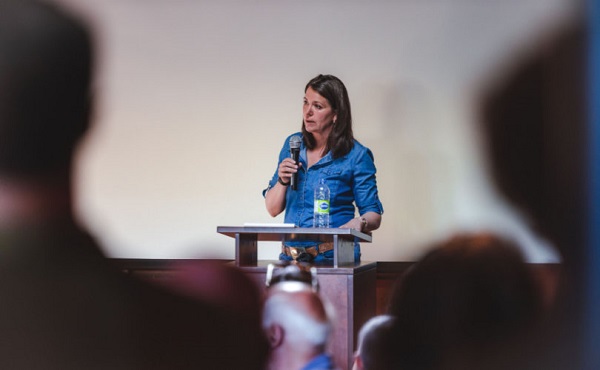
From LifeSiteNews
Alberta’s premier said her government will be holding a special caucus meeting on Friday to discuss Alberta’s independence.
Alberta Premier Danielle Smith hinted her province could soon consider taking serious steps toward greater autonomy from Canada in light of Mark Carney and the Liberal Party winning yesterday’s federal election.
In a statement posted to her social media channels today, Smith, who is head of Alberta’s governing United Conservative Party, warned that “In the weeks and months ahead, Albertans will have an opportunity to discuss our province’s future, assess various options for strengthening and protecting our province against future hostile acts from Ottawa, and to ultimately choose a path forward.”
“As Premier, I will facilitate and lead this discussion and process with the sincere hope of securing a prosperous future for our province within a united Canada that respects our province’s constitutional rights, facilitates rather than blocks the development and export of our abundant resources, and treats us as a valued and respected partner within confederation,” she noted.
While Smith stopped short of saying that Alberta would consider triggering a referendum on independence from Canada, she did say her government will be holding a “special caucus meeting this Friday to discuss this matter further.”
“I will have more to say after that meeting is concluded,” she noted.
Smith’s warning comes at the same time some pre-election polls have shown Alberta’s independence from Canada sentiment at just over 30 percent.
Monday’s election saw Liberal leader Mark Carney beat out Conservative rival Pierre Poilievre, who also lost his seat. The Conservatives managed to pick up over 20 new seats, however, and Poilievre has vowed to stay on as party leader, for now.
In Alberta, almost all of the seats save two at press time went to conservatives.
Carney, like former Prime Minister Justin Trudeau before him, said he is opposed to new pipeline projects that would allow Alberta oil and gas to be unleashed. Also, his green agenda, like Trudeau’s, is at odds with Alberta’s main economic driver, its oil and gas industry.
The federal government under Trudeau pushed since 2015 a radical environmental agenda similar to the agendas being pushed the World Economic Forum’s “Great Reset” and the United Nations “Sustainable Development Goals.”
The Carney government has also pledged to mandate that all new cars and trucks by 2035 be electric, effectively banning the sale of new gasoline- or diesel-only powered vehicles after that year.
The reduction and eventual elimination of the use of so-called “fossil fuels” and a transition to unreliable “green” energy has also been pushed by the World Economic Forum (WEF) – the globalist group behind the socialist “Great Reset” agenda – an organization in which Trudeau and some of his cabinet are involved.
Smith: ‘I will not permit the status quo to continue’
In her statement, Smith noted that she invited Carney to “immediately commence working with our government to reset the relationship between Ottawa and Alberta with meaningful action rather than hollow rhetoric.”
She noted that a large majority of Albertans are “deeply frustrated that the same government that overtly attacked our provincial economy almost unabated for the past 10 years has been returned to government.”
Smith then promised that she would “not permit the status quo to continue.”
“Albertans are proud Canadians that want this nation to be strong, prosperous, and united, but we will no longer tolerate having our industries threatened and our resources landlocked by Ottawa,” she said.
Smith praised Poilievre for empowering “Albertans and our energy sector as a cornerstone of his campaign.”
Smith was against forced COVID jabs, and her United Conservative government has in recent months banned men from competing in women’s sports and passed a bill banning so-called “top and bottom” surgeries for minors as well as other extreme forms of transgender ideology.
Alberta
Hours after Liberal election win, Alberta Prosperity Project drumming up interest in referendum

News release from the Alberta Prosperity Project
Carney’s In. Now what?You’ve been paying attention. You understand this is really bad. Worse than that, it’s dangerous. The country has somehow chosen several more years of a decade-long Trudeau Travesty…on steroids. Because this new Prime Minister has a three digit IQ, deep and questionable connections and a momentum to accelerate the further dis-integration of a nation we all once proudly belonged to. It’s untrue to say the country is dying. But it’s also not a stretch to say it’s on life support. The era of Carney Carnage is here. While every province will experience it, there’s no secret he’s placed an extra big bulls-eye on Alberta. It’s not personal, it’s financial.His plan includes continuing to limit three of Alberta’s most prosperous sectors: energy, agriculture and, by extension, innovation. To acknowledge this requires we abandon our sense of romanticized national nostalgia. Nostalgia is a trap that prevents us from assessing the reality we exist in. For instance, GDP is considered the financial heartbeat of a country. Over the past decade of Liberal Leadership, the national GDP has been an abysmal 1.1%. By relatable comparison, Mexico was 4%, the UK was 6%, Australia had 8% growth and the US was a whopping 19%. That’s great information for an economist, but what does it mean to your pay cheque? The everyday impact on the average Albertan —say, a teacher or mechanic— of 10 long years of 1% GDP means rent’s up at least 25%, a trip to the grocery store always stings, and driving an older car is the norm because an upgrade is out of reach. Does this sound like your reality? We aren’t starving, but we’re not thriving, either.Does this make sense for 4.5 million people living with the third most abundant energy deposits in the world? There’s an absurdity to the situation Albertans find themselves in. It’s akin to being chronically dehydrated while having a fresh water spring in the backyard. The life you’ve invested for, the future you believed was ahead, isn’t happening. If Alberta stays on this path. So what can you, as an Albertan, do about it? This Fall, we’ll be provided an opportunity. A life raft in the form of a referendum. It requires curiosity, imagination and courage to step into it, but the option will be there — a once in a lifetime shot at prosperity for you and your family: Alberta Sovereignty. A successful bid means Albertans can finally paddle out of the perilous economic current that’s battered us for ten long years. Alberta has the resources, talent and spirit of collaboration to create a prosperous future for our families and communities. |
|
|
UPCOMING EVENTS: |
|
|
WHAT CAN ALBERTANS DO?Register Your Intent To Vote “YES” |
-
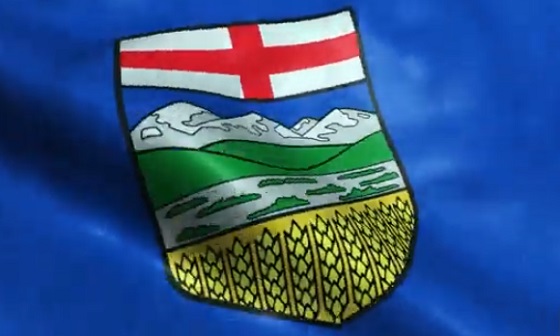
 Alberta10 hours ago
Alberta10 hours agoNew Alberta Election Act bans electronic vote counting machines, lowers threshold for recalls and petitions
-

 Alberta10 hours ago
Alberta10 hours agoHours after Liberal election win, Alberta Prosperity Project drumming up interest in referendum
-
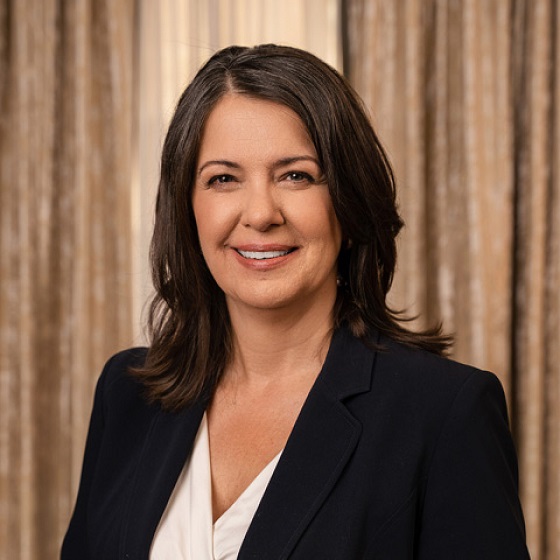
 Alberta18 hours ago
Alberta18 hours agoPremier Danielle Smith responds to election of Liberal government
-

 Automotive1 day ago
Automotive1 day agoMajor automakers push congress to block California’s 2035 EV mandate
-

 Autism2 days ago
Autism2 days agoUK plans to test children with gender confusion for autism
-
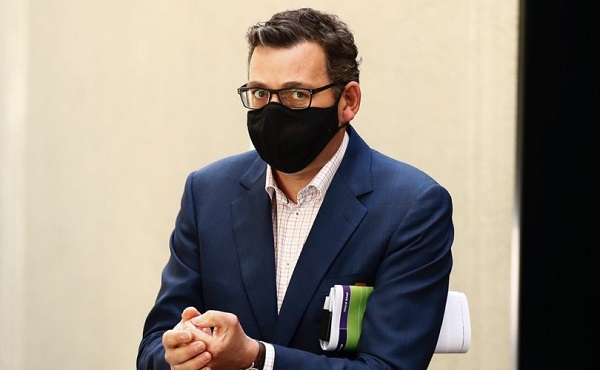
 COVID-192 days ago
COVID-192 days agoFormer Australian state premier accused of lying about justification for COVID lockdowns
-
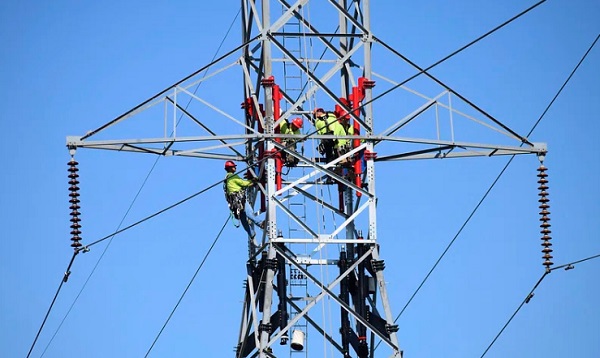
 Business2 days ago
Business2 days agoNet Zero by 2050: There is no realistic path to affordable and reliable electricity
-

 Banks11 hours ago
Banks11 hours agoTD Bank Account Closures Expose Chinese Hybrid Warfare Threat



